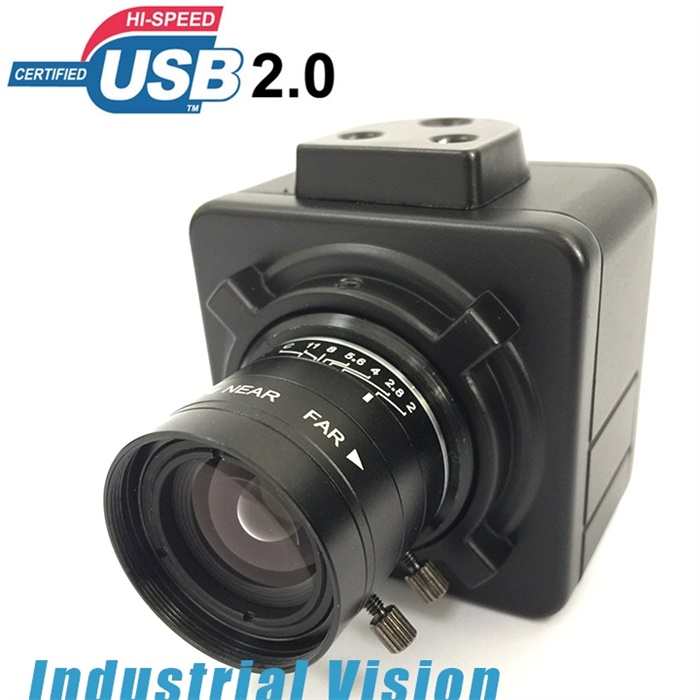Dear Customer,
the following article is useful and valuable for you to know How to maintain and clean industrial camera
Industrial cameras are a key component of the machine vision inspection system, with high image stability, high transmission capacity and high anti-interference ability. The correct cleaning and maintenance methods of industrial cameras can extend their service life, so how to clean industrial cameras when they are dirty in machine vision inspection?
For industrial camera lens dust, you can use a lens pen. It cannot be used on wet surfaces, nor can it be mixed with lens water, lens cleaning fluid, etc. If there are fingerprints or dust on the camera, you can blow it up or use a soft, dry and non-wiping. Of course, if the stain on the industrial camera is very stubborn, you can use a cloth dipped in a moderate amount of neutral detergent and then wipe it dry. Cleaning the crevices of the fuselage is also a place that cannot be ignored in cleaning. You can use a cleaning stick to clean the crevices of the camera, and then use a pointed cotton swab to dip a small amount of cleaning fluid and gently wipe along the edge of the button or dial. The stains on the sensor can also be treated with air blowing, the air blowing as close as possible to the sensor, so that the dust can be better blown away.
Finally, it should be noted that if the industrial camera is not used for a long time, it is best to take out the battery and place it in a sealed package, which can better protect the industrial camera.
1 Do not touch the lens surface with your fingers
Whether cleaning or normal use, keep the edge of the handheld lens and never touch the lens surface with your fingers. The camera lens is a very precise part, its surface is anti-reflective coating treatment, touch the lens with the finger, the lens surface will stick oil stains and fingerprints, harmful to the coating, thus affecting the use of industrial cameras.
2 Choice of cleaning utensils
In general, compressed air is sufficient to remove all impurities from the inside of an industrial camera chip, but it is not advisable to use compressed air of the spray type, which often contains water, oil, etc. that can damage the surface of the chip. At the same time, microfibers can go deep into the surface of the lens to remove impurities, can achieve the goal of completely removing impurities. Wipe the industrial camera, you can choose the concentration of more than 90% pure alcohol, but be careful not to use isopropyl alcohol, because isopropyl alcohol will absorb moisture in the air, leaving traces of liquid on the surface of the sensor.
Note: Do not use metal tools or pliers to handle the lens of an industrial camera, but should be handled using wooden, bamboo and plastic tools to avoid scratches.

3 Cleaning requirements for different stains
1) Lens dust: You can use lens pens, which are specially designed for optical lenses. They cannot be used on wet surfaces, nor can they be mixed with lens water, lens cleaning fluid, etc. Lens stains: Recommend disposable professional lens cleaning paper (lens cleaning paper). Use a dust blower to remove. And do not use volatile solvents such as alcohol, gasoline or thinner, otherwise it will damage the surface gloss. It should be noted that metal tools or pliers must not be used to handle the lens, otherwise it will leave scratches on its surface.
2) Fingerprints or dust on the camera: air blow or wipe with a soft, dry cloth. If the camera contamination is very persistent: Dip a cloth with an appropriate amount of neutral detergent, and then wipe it dry. Do not use volatile solvents such as gasoline or thinner, otherwise it will damage the surface gloss.
3) Body crevices: Use a cleaning cotton swab to clean the camera gaps, use a pointed cleaning cotton swab to dip a small amount of cleaning fluid, and gently wipe along the edge of the button or dial. If there are fingerprints or dust on the camera, wipe it with a soft, dry cloth, and wipe the body with a soft, dry cloth. If the pollution is very stubborn, use a cloth with a moderate amount of neutral detergent and wipe it dry.
4) Sensors: General dust can be blown with air blowing, blowing air as close as possible to the sensor can better blow away the dust, in the face of stubborn oily dust, air blowing can not be blown away, at this time can be used to clean the rod (jelly pen, the top has viscosity) to deal with.
5) Small lens: you can use a handheld vacuum pen.
4 Keep the lens on a soft surface
Keeping the lens on a soft surface, especially if the optical surface is raised, placing it stationary on a hard tabletop can cause scratches on the surface
5 Cover the lens cover when not in use and keep it
For industrial lens systems or assembly, putting on the lens cap when not in use can protect the optical surface from damage. If you do not use the camera for a long time, it is best to use a sealed package after removing the battery. It would be great if you can equip it with a moisture-proof box. In addition, never put the unwrapped lenses together in a box or bag or under heavy objects to avoid damage.
Vehviscam manufacture limited Vehviscam provides various kinds of portable USB industrial Camera for embedded vision system and other commercial and industrial security applications, welcome to view more online or contact us